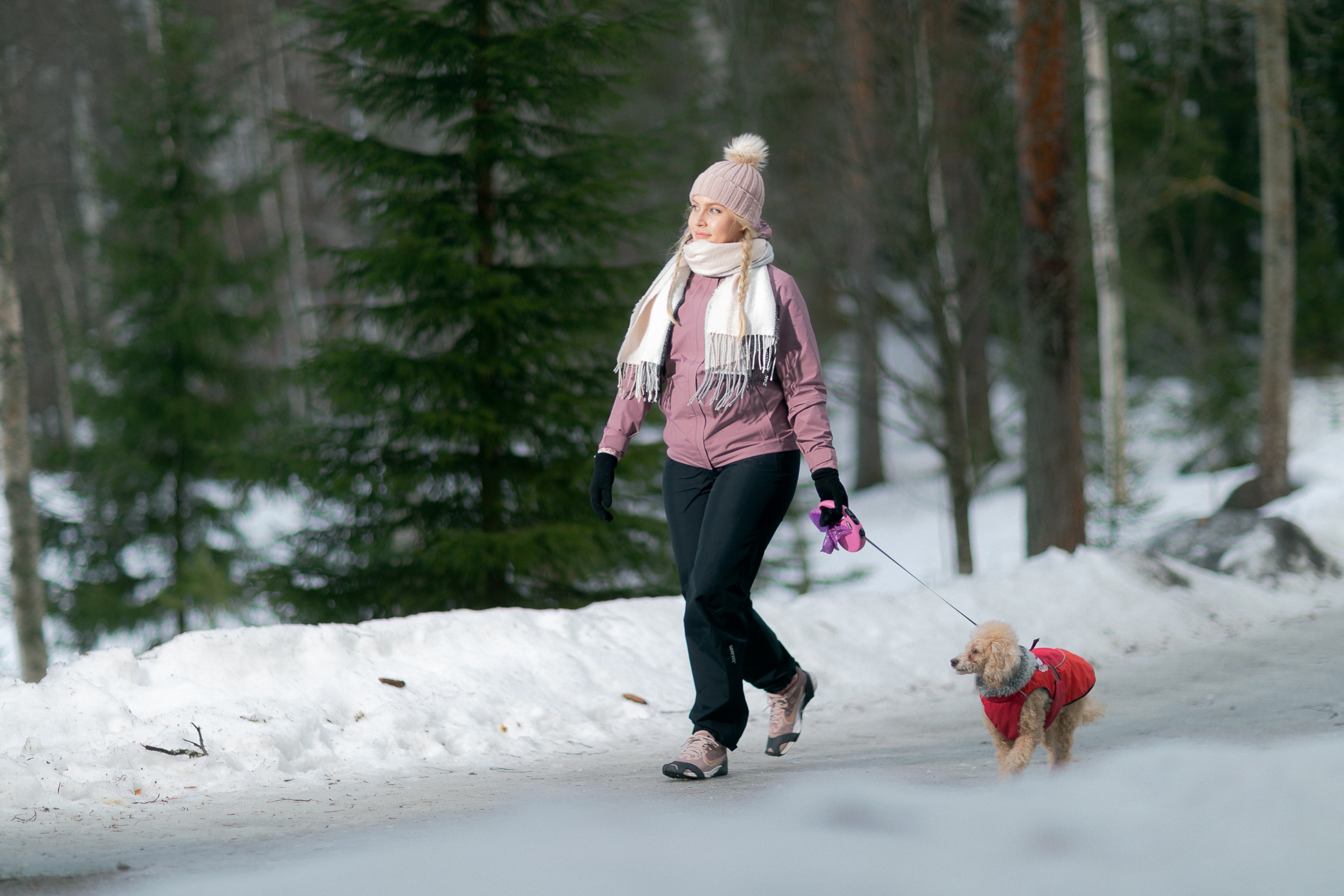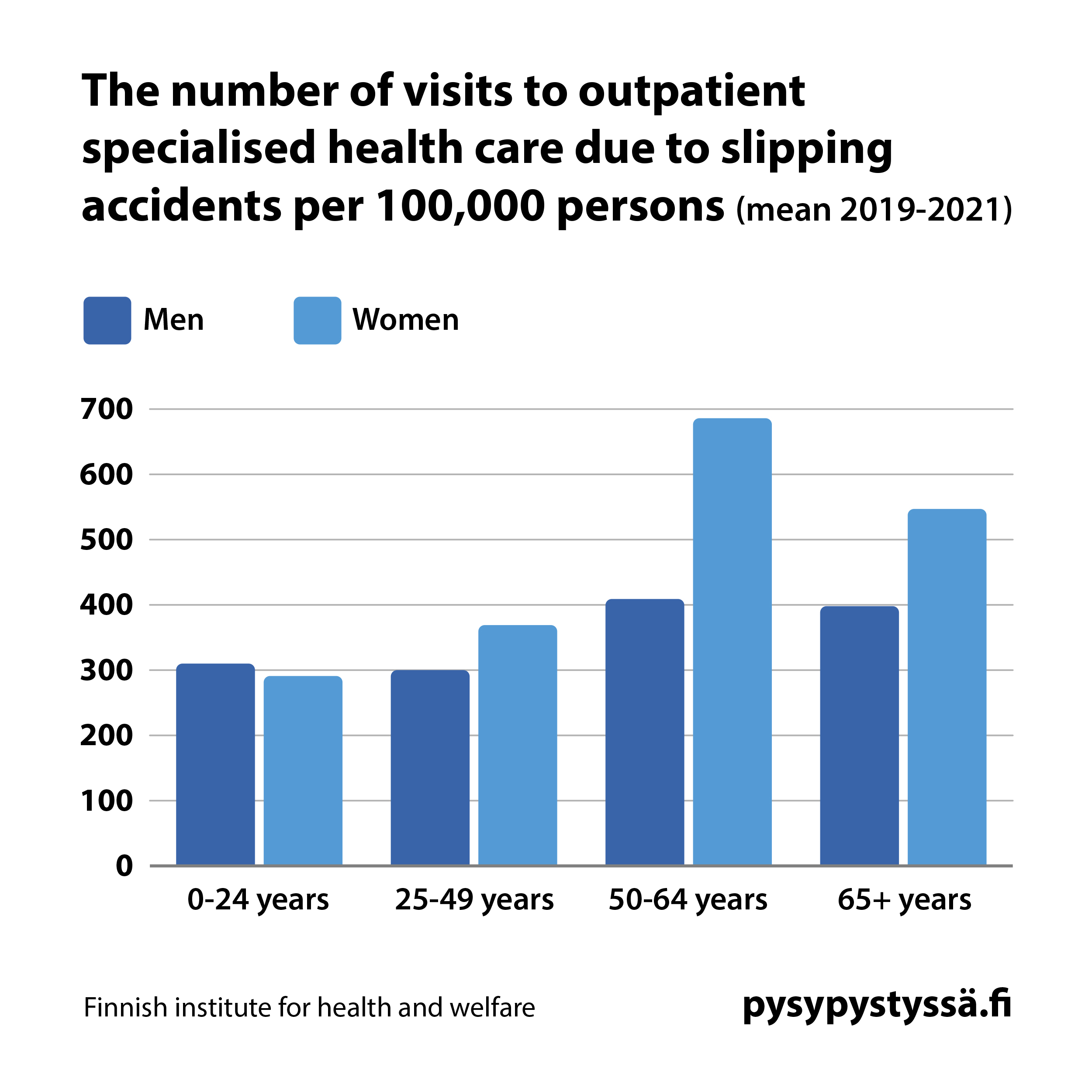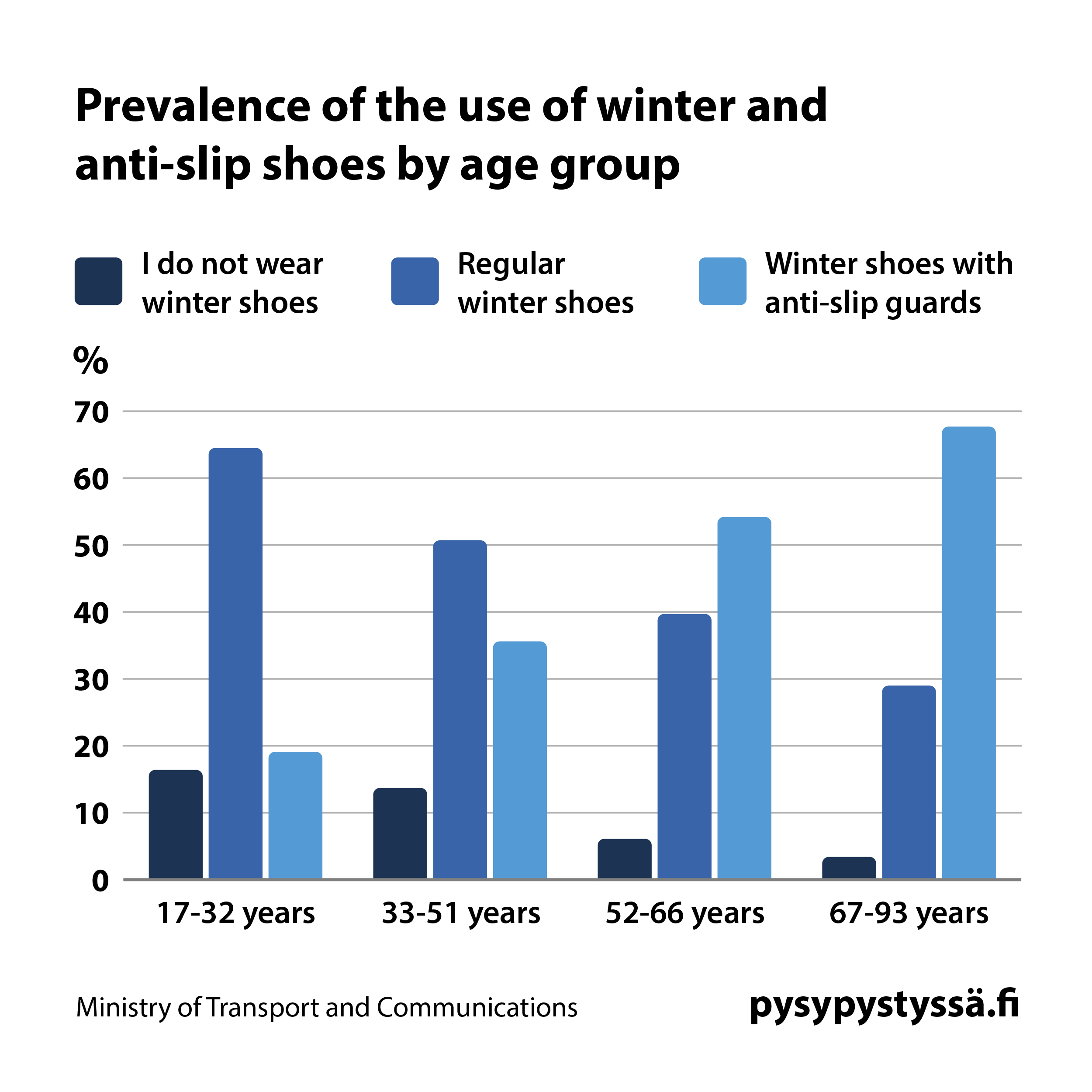Stay on your feet − the risks of slipping increase with age
Slipping and falling can happen to people of all ages. It is important to understand that you can reduce your own risk of slipping and falling. With age, there is an increased risk that injuries caused by slipping and falling will be more severe and require specialised medical treatment. The statistics on outpatient specialised health care show a higher proportion of slip-and-fall accidents among women aged 50 and above.

According to a report* published by the Ministry of Transport and Communications, there are around 125,000 slip-and-fall accidents in Finland every year. Just over half (56%) of these accidents happen to women. Up to two thirds of slip-and-fall accidents occur among people aged between 20 and 54. Slip-and-fall accidents occur during commuting, for example, and result in significant financial costs due to sick leave.
Women over 50 suffer more severe consequences of slip-and-fall accidents
With age, as muscle and bone strength deteriorate, there is an increased risk that injuries caused by slipping and falling will require specialised medical treatment. There is a clear spike in the number of visits to outpatient specialised health care for women over the age of 50**. The most common types of injuries caused by slipping and falling that require hospital care include various head injuries and limb fractures.
“In women, menopause can be associated with a loss of muscle and bone strength, which can increase the risk of falling accidents and related injuries. The older a working-age person is, the more severe the injuries caused by slipping and falling can be, especially for women,” emphasises Ansa Holm, the executive director of Luustoliitto.

Use of anti-slip guards also increasing among younger working-age people
A report by the Ministry of Transport and Communications shows that 44% of Finland’s population prepare for slippery conditions by wearing winter shoes with anti-slip guards. In the report, the term ‘anti-slip guard’ also refers to studded, traction and friction shoes. The rate of use increases with age, and more than half of the people over the age of 50 wear winter shoes with anti-slip guards.
There has been a positive change, as younger people have also started to wear anti-slip guards.
“Anti-slip products have been on the market for at least the last 40 years. There have been huge advances in anti-slip guards, and now studded shoes and various types of traction and friction shoes have also found their place in the market. Of our customers, women aged between 33 and 51 are the largest user group of anti-slip products,” confirms Jari Pesu from Nikander & Wiinikka Oy, the representative of Devisys anti-slip devices.
One of the most important ways to prevent slip-and-fall accidents is physical exercise. People of all ages should take care of their mobility, muscle strength and balance.
The precautions the person makes themselves also plays a key role in preventing accidents involving slipping and falling.
“You will not be caught off guard in slippery conditions when you stay on top of road condition forecasts and check whether the streets are slippery before you go out – and prepare for slippery conditions with the appropriate footwear or anti-slip guards,” reminds Planning Officer Laura Loikkanen from the Finnish Road Safety Council.
*Publications of the Ministry of Transport and Communications 2022:2 Pedestrian slip-and-fall accidents and their prevention: an equality perspective (valtioneuvosto.fi; in Finnish)
**Finnish institute for health and welfare, Care Register for Health Care, average for 2019−2021.
Figure 1: Finnish institute for health and welfare. The figures are for visits to outpatient specialised health care due to slipping/falling on icy/snowy conditions. The figures are proportionate to the population: the number of slipping accidents per 100,000 persons of the same age group. The average for 2019−2021.
The ‘Stay on your feet’ campaign period is 16–29 January 2022.
Website of the ‘Stay on your feet’ campaign (in Finnish)
Kotitapaturma on Facebook, Kotitapaturma on Twitter
More information:
On the campaign: Saara Aakko, Planning Officer, Finnish Red Cross, +358 (0)40 4806 973, saara.aakko@punainenristi.fi
Ansa Holm, Executive Director, Luustoliitto ry, +358 (0)50 3038 129
Hanna Kettunen, Senior Researcher, Finnish Institute for Health and Welfare, +358 (0)29 5247 582
Jari Pesu, Product Manager, Nikander & Wiinikka Oy, +358 (0)50 0732 372
Laura Loikkanen, Planning Officer, Finnish Road Safety Council, +358 (0)20 7282 341
The ‘Stay on your feet’ test (in Finnish): kotitapaturma.fi/pysy-pystyssa-testi
The bone health test (in Finnish): Luustoliitto.fi/luustotesti
Campaign partners: Aivovammaliitto, EHYT Finnish Association for Substance Abuse Prevention, Finance Finland, the Finnish Meteorological Institute, the Finnish Association of People with Physical Disabilities, the Finnish Road Safety Council, Icebug Finland, Luustoliitto, LähiTapiola, Nikander ja Wiinikka Oy, Partioaitta, the Finnish Ministry of the Interior, the Ministry of Social Affairs and Health, the Finnish Red Cross, Taitavat Suutarit ry, the Finnish Institute for Health and Welfare, the Finnish Institute of Occupational Health.
Can you use the information on this page?
Give Feedback
With this form you can give us feedback.
You may also be interested in
-

More about accident prevention
Please find more information about accident prevention in the links below -

Observational failures are a typical element in cycling accidents – National Accident Prevention Day focuses particularly on men’s proneness to accidents
Nearly half of the men who cycle have either had a fall or been involved in an accident while cycling during the last three years, according… -

Two out of five people have ended up in hazardous situations due to slippery shoes
According to a new survey by the Finnish Road Safety Council, up to 40 per cent of Finns say they have experienced a hazardous situation in … -

Keep your feet on the ground this festive season – despite the increased risk
If the pavements are slippery during the festive season, it is reflected in a peak in pedestrians falling accidents and people hurting thems…
